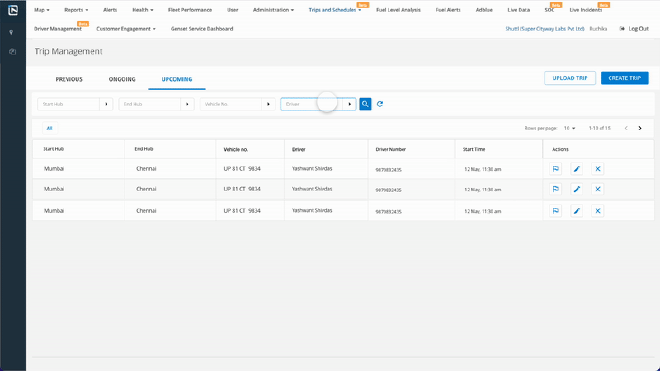Project Overview#
Trip management is a feature that has helped fleet owners and operational managers to track the trips of their vehicles to increase the revenue by saving time and fuel consumption.
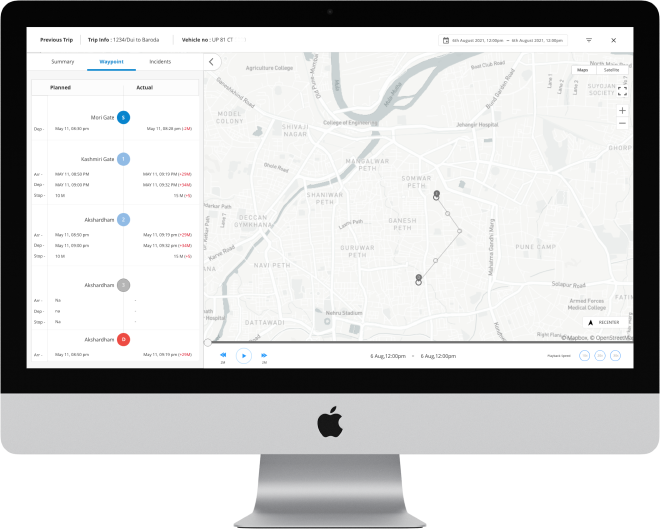
Problem Statement
#
For the operational manager, it was becoming difficult to manage each vehicle trip data point in different place to understand where they could saved their resources and time. Users wanted to track the ETA of the vehicle so users could plan a trip in advance for a vehicle to utilize their resource more proficiently. So, over time, it becomes difficult to track whether the driver has taken route deviation or not.
Problem
#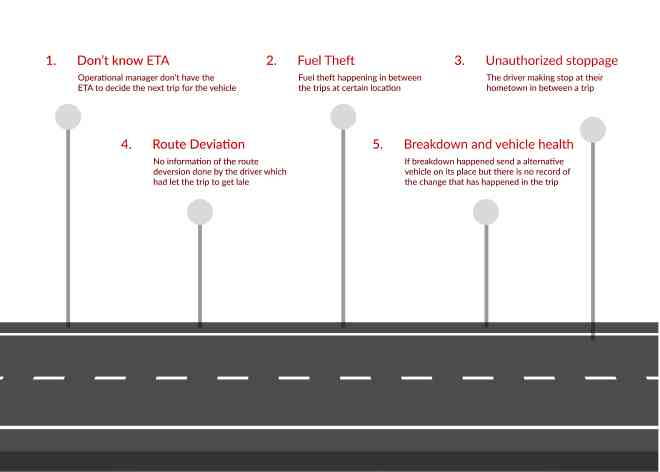
Solution
#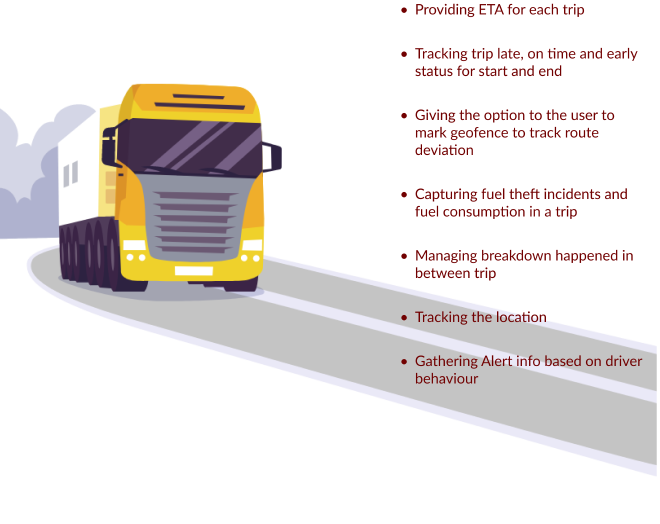
Tool Used
#
Design Process
#As experience designer for this project I was resposible for the both research and interface.
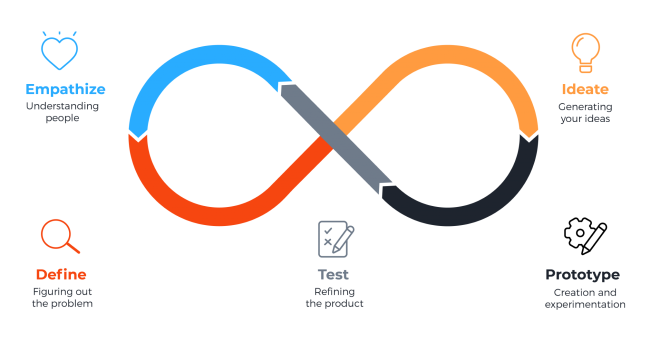
Target Audience
#Truck and Bus Industry
#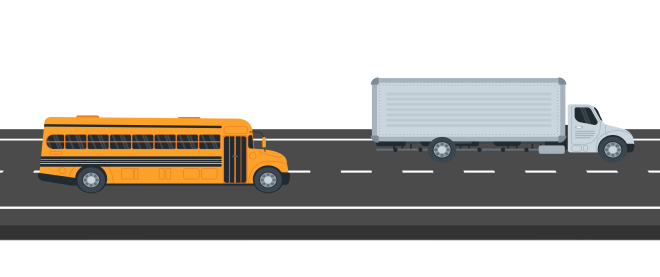
User Research#
Quantitative Research#
Quantitative UX research is the research strategy that focuses on quantifying the collection and analysis of numerical data. It can be used to find patterns and averages, make predictions, test causal relationships, and generalize results to wider populations.
Survey Question#

Qualitative Research#
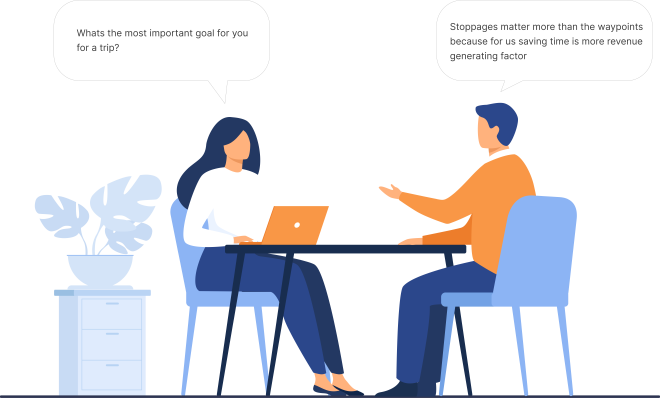
- How do you manage your trips?
- What things do you like about you job while managing the trips for the vehicles? Have you ever had great experiences? If yes,
- What was it?
- Can you give me details or explain?
- Why?
- Have you ever faced any issues on the platforms that you are using for trip managing? (I mean any bad experience)
- What was it?
- Can you give me details or explain?
- Why?
- Are you the only one who looks at this data on the platform?
- How many other people look after the platform?
- When was the last time you had a great experience?
- Tell me more about that.
- When was the last time you had a bad experience?
- Tell me more about that.
- Why is that important to you?
- How would you recommend our product to a follow transporter friends?
- Who else are there in your team?
- What are the most significant pieces of information which help you in cost reduction?
- How do you manage breakdown and accident issues?
- What are the most common issues you tackle that you face day to day?
- How?
- What measures do you take for it?
- Can you show me?
Interview Insights#
Truck Industry:#
Stoppages matter more than the waypoints. The user want to reduce the transit time by reducing the transit time truck can be sent to another trip early and it will increase the utilization of the resource and increase the revenue as well.
Bus Industry:#
The waypoint is something user analyze frequently because customers are waiting at the stop and for the bus on time of arrival is important.
If a bus is delayed then they are provided a low rating by the customer which affects their revenue and business.
Target Audience#
Truck: Operational Manager#
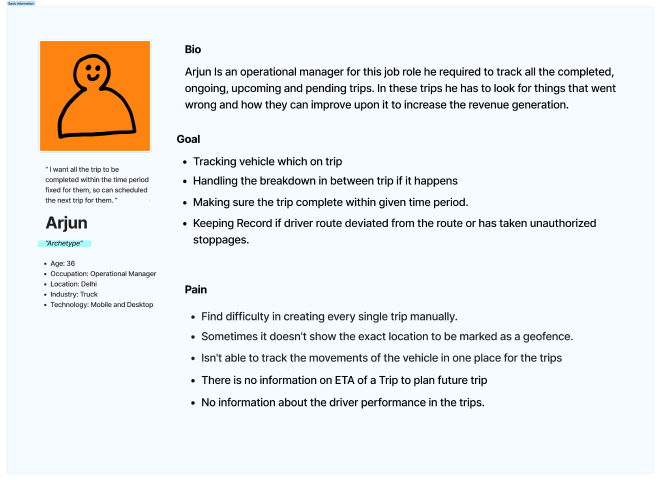
Bus: Operational Manager#
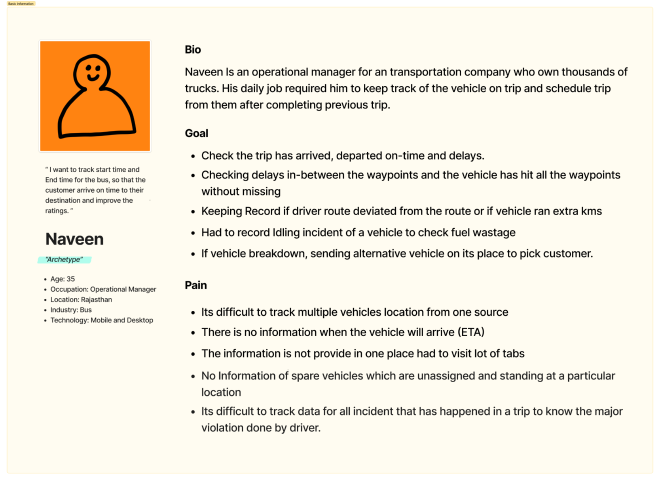
Journey Mapping#
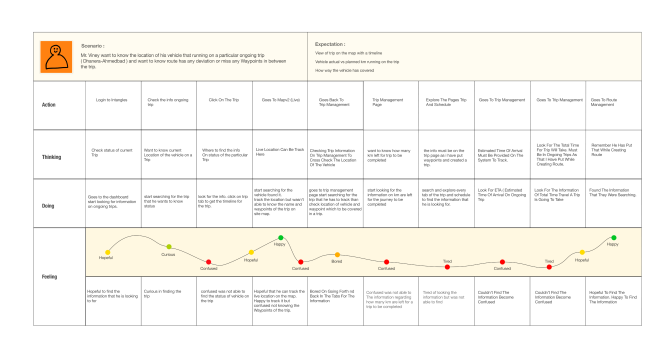
Competitive Analysis#
I did a lot of research to find out the competition that I can analyse But the data that I got is in pieces.
Samsara has given the option of measuring the trip that is finished on Route TIme, Distance and Stop Time DIfference.
They show the difference of actual vs planned in all categories above. Show in a graph form as well.
Fleetx is more focused on providing information related to the trip as compared to vehicle maintenance. Fleetx is also showing information of the trips on their main page of the map with the filtration based on time, late, early, assigned and unassigned vehicle location in the map view with details about it at what location it is driving for ongoing trips.
For the finished trip, it has a tab called control room where the user gets all the information about the trips.
From the fleetup, I found most data about the finished trip. How they are representing the data.
Feature#
- Complete
- Ongoing
- Upcoming
- Pending
- Dashboard
- Create Trip
Information Architecture#
Information architecture (IA) was created after taking all the essential considerations and gathering the data points. The goal is to help users find information and complete tasks.
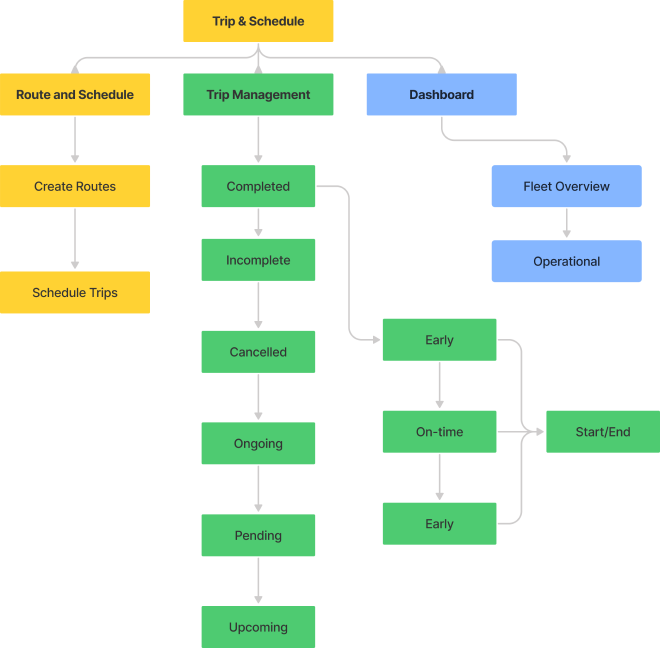
Design Principles#
Straight Forward
Simple - easy to understand
Make it less complicated
Consistent and Accessible
Rough Sketches#
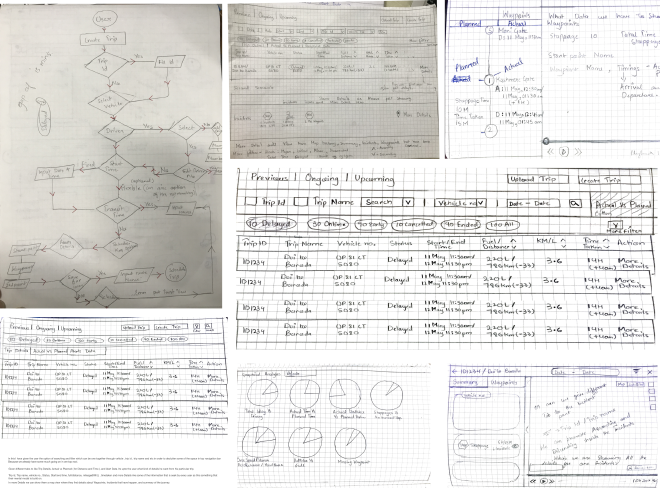
Low Fidelity Wireframes#
Low-fidelity wireframes are basic wireframes in which I outline blueprints for app screens. This help me communicate with my team “the idea” and tested out with the users.
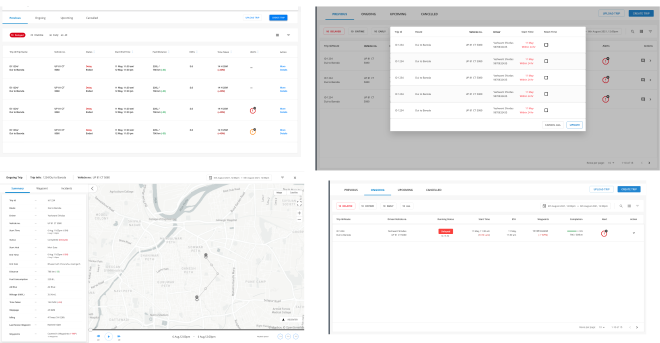
High Fidelity Wireframes#
Later in the stage after all the discussion with team. I had develop the high-fidelity mockups for the web based on the all input gathered in the usability test and Research.

Prototype#
